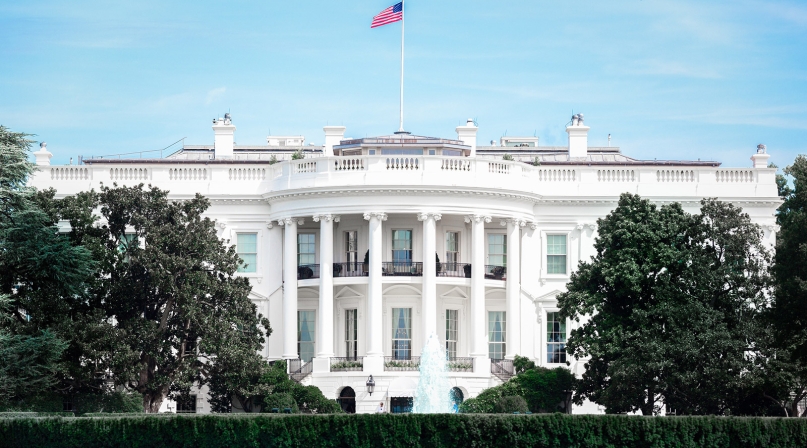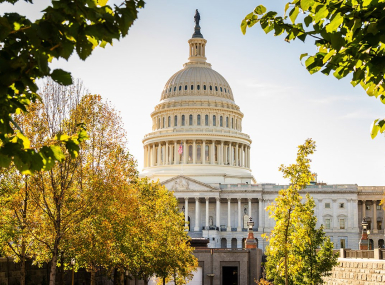NACo releases analysis of President’s FY 2020 Budget Request, including potential impacts on counties
Upcoming Events
Related News

Key Takeaways
Counties and the President’s Budget Request
The nation’s 3,069 counties play a key role in administering federal programs and services in our local communities. Counties build and maintain public infrastructure, transportation and economic development assets, provide criminal justice and public safety services, and protect the public’s health and well-being.
Policies and programs established by the federal government help support and coordinate local efforts, and a strong partnership between all levels of government is critical to providing many of the programs and services on which America’s residents rely every day.
This document includes both summary charts highlighting proposed cuts, eliminations or increases to key federal programs in the president’s FY 2020 budget request that are relevant to county governments and a section by section summary of the budget outlining items of note for county governments.
Overall, the proposed budget is a mixed bag for counties.
On the positive side, the budget proposes to improve the effectiveness and efficiency of many federal programs that counties use. The budget also proposes to increase and direct new funding at key county priorities including:
- $1.5 billion in grants to address the opioid crisis
- $200 billion in new infrastructure investments
- $200 million for a broadband pilot program
- An increase of nearly $7 billion to the Federal Emergency Management Agency’s Disaster Relief Fund
- A $94 million increase to the Prevention and Public Health Fund
- Full funding for the Payment in Lieu of Taxes program
However, the budget also targets key federal programs important to county governments for cuts and even elimination. Some of these include:
- The elimination of the 15 percent off-system bridge set-aside under the Surface Transportation Block Grant, funded at $777 million in FY 2019
- The elimination of the State Criminal Alien Assistance Program, currently funded at $244 million
- The eliminations of the U.S. Department of Housing and Urban Development’s Community Development Block Grant, the HOME Investment Partnerships Program and the Economic Development Agency
- A proposed $1.4 trillion cut to Medicaid, which would shift health care costs to counties
- A $39 million reduction to the Essential Air Service program
- Institute universal work requirements for federal public assistance programs that would increase administrative costs for counties
- Cuts $691 million from federal emergency preparedness grants
Of great concern to counties, the FY 2020 budget proposes to significantly reduce federal contributions to the federal-state-local intergovernmental partnership by limiting numerous state and local grant and aid programs.
According to the budget, approximately two-thirds of Executive Branch agencies and 13 independent federal agencies provide grants to state and local governments. The administration calculates that this grant spending has increased from 1.3 percent of the nation’s GDP in 1960 to 3.4 percent of GDP in 2018.
Since 1989, spending on grants to states and local governments increased from 10.7 percent of all federal outlays to 17 percent in 2018. In 2018, the federal government contributed $697 billion in aid to states and local governments. Over the last three decades, the federal, state and local share of financing has held relatively steady, with states and local governments financing between 74 percent and 79 percent of all programs.
The primary goal of the president’s FY 2020 budget proposal related to state and local aid is to “slow the growth of grant spending” to state and local governments over the ten-year budget window. Specifically, the budget proposes to move much of the responsibility for many of the programs currently and historically funded by federal grants down to state and local governments. In many cases, the budget argues that “state and local governments should bear greater responsibility” for supporting certain initiatives including housing, economic development and health care. Combined, these changes would increase the fiscal burden carried by state and local governments who may be unable to adequately fill the gap left by a lack of federal resources.
To achieve the goal of reducing federal aid to state and local governments, the White House proposes a new “Cross-Agency Priority (CAP) Goal: Results-Oriented Accountability for Grants.” The CAP proposal includes two key components: first, it aims to make federal grant delivery “as [efficient] as possible.” Second, the CAP plan proposes a risk-based and data-driven framework for grant awards to target grants to those areas that are the most in need.
The CAP goal recognizes that as federal aid to states and local governments slows, federal dollars will need to be used more efficiently. It would manage this process through “developing data standards and common business applications and by applying a risk-based, data driven framework that balances compliance requirements with demonstrating successful results for the American taxpayer.”
Counties look forward to learning more about the implementation process for this CAP goal and finding a balance between federal responsibilities and the capacities of state and local governments to support programs traditionally funded by the federal government.
Attachments
Related News

U.S. House passes minibus funding package
U.S. House and Senate appropriators introduced a “minibus” appropriations package containing Fiscal Year (FY) 2025 Interior-Environment, Commerce-Justice-Science and Energy-Water spending bills.

County Countdown – Dec. 15, 2025
Every other week, NACo's County Countdown reviews top federal policy advocacy items with an eye towards counties and the intergovernmental partnership.

County Countdown – Dec. 1, 2025
Every other week, NACo's County Countdown reviews top federal policy advocacy items with an eye towards counties and the intergovernmental partnership.